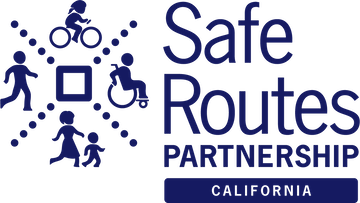Staff recommendations for Cycle 5 of the Active Transportation Program were released earlier this month. As we expected, the program became even more competitive than it was in Cycle 4: the cut-off score in the Statewide Component was 92 out of 100, a rise from Cycle 4’s cutoff score of 89. There was only enough funding for 41 projects in the statewide competition, and 9 in the Small Urban and Rural component, a decrease of 18 percent and 10 percent, respectively, from Cycle 4.
We have put together an analysis of the results, available here. A few observations have leapt out to us:
Large projects (greater than $10 million) constituted a considerable portion of the funded projects, but not significantly more than last cycle. Further, the median funding request of Large Infrastructure projects that were funded was actually slightly lower than the median funding request in the same category in Cycle 4.
Conversely, the funding requests for Medium Infrastructure applications (in the range of $2 million - $7 million) have increased significantly, and particularly among those recommended for funding. Medium Infrastructure applications that received funding will receive a median of $4.478 million in Cycle 5, compared to a median of $3.72 million in the same category in Cycle 4, a 20 percent increase. While an analysis of all applications would be needed to draw any definitive conclusions, these trends seem to indicate that applicants are opting for bolder treatments in their project scopes that are more likely to significantly boost safety and mode shift. The evaluation process seems to be rewarding them accordingly, though with the cumulative effect that the funds available in the program are exhausted more quickly.
There was thankfully less geographic disparity in the Cycle 5 awards than in Cycle 4, when the Bay Area only had 2 applications recommended in the Statewide competition compared to 23 from the Los Angeles area. This time, the two regions had comparable success rates in their applications, although Southern California submitted almost three times as many applications as the Bay Area, so more of its projects will be funded. However, there are considerable differences in performance between counties within those regions. This may indicate the MPOs should target technical assistance to the counties that have struggled.
Plan applications fared poorly this cycle- only one out of 23 applications to write an Active Transportation, Bicycle, Pedestrian or Safe Routes to School plan was recommended for funding. This is a stark contrast to Cycle 4, when more than 20 percent of Plan applications were funded. This development concerns us, as the process of creating a plan is a critical step for under-resourced and Disadvantaged Communities to set themselves up for success in subsequent cycles. We worry that the ATP may grow further out of reach for such communities if it does not consistently support plans in each cycle.
Combined Infrastructure/Non-Infrastructure applications continued to outperform stand-alone Infrastructure applications across project sizes, even more than they did in Cycle 4, confirming our belief that such collaborations are a best practice.
Applications generally scored better across the board: the average score of all applications rose from 70 to 75, and the median score rose from 74 to 79.
Finally, we want to congratulate two of the communities to whom we provided Technical Assistance in Cycle 5 and who are slated to receive funding: Muscoy, and Barstow, both in San Bernardino County. The San Bernardino Departments of Public Works and Public Health jointly submitted the Muscoy application, which received a score of 97 (tied for the third highest score in the Statewide competition). Barstow’s application received an 86 and we have been informed that it will receive funding in the MPO component from SCAG.


